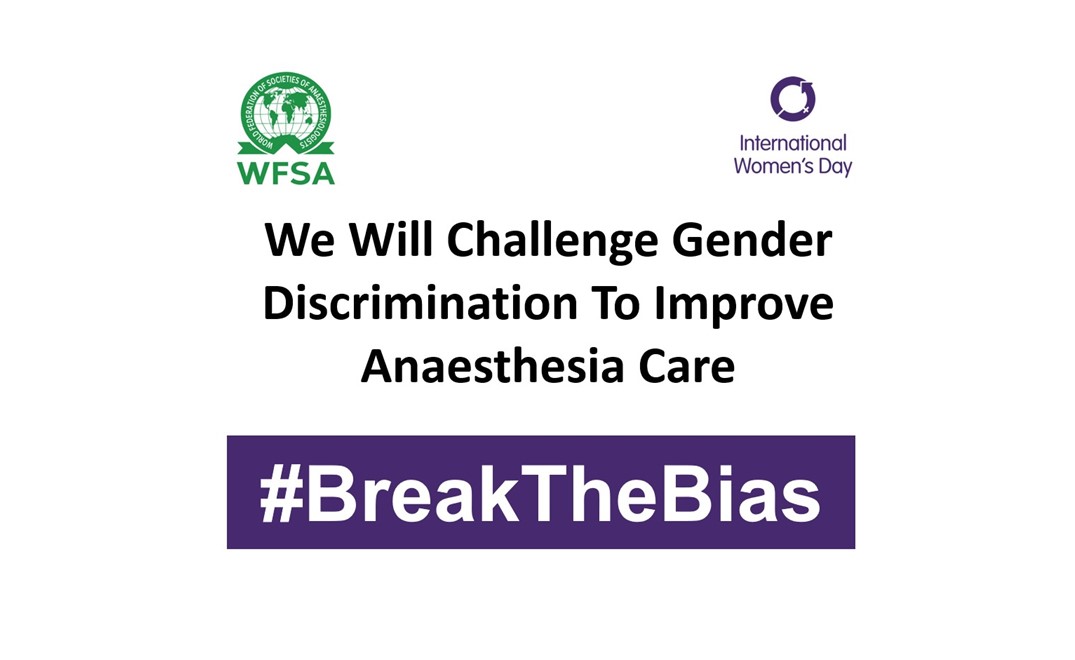An article by members of the WFSA Diversity, Equity and Inclusion Committee.
Gender bias in the anaesthesia speciality is not an exception. It is evident that women face gender-based challenges throughout their medical education and career; as well as inequitable access to procedural training, a gap in confidence, and a professional identity deficit. The theme for the 2022 International Women’s Day (IWD) is “Break the Bias”. In anaesthesiology, in line with this theme, we are striving for a speciality free of bias, stereotypes and discrimination and are working towards a gender-equal speciality where differences are valued and celebrated. These are a few of the reasons for the creation of WFSA’s new Diversity, Equity and Inclusion Committee and why we choose to celebrate women.
The reasons for gender disparity in anaesthesiology leadership and faculty positions include unsupportive work environments, a lack of mentorship opportunities, childcare responsibilities, and active discrimination against women. For example, male anaesthesia trainees in Australia and New Zealand perform 10 times more procedures than their female counterparts; and women reported significantly higher levels of gender bias exhibited by patients (men 1.1%, women 84.5%; P<0.001) and in training overall (men 10.3%, women 55.3%; P<0.001). Gender bias was compounded in women from an ethnic minority background.
Despite the increasing contribution to research in anaesthesiology by women as shown by female first authorship, senior authorship, and editorial board membership, there exists a wide gender gap in academic practice and leadership, honour awards, and academic promotion.
To eliminate gender bias, De Cassai and Correale (2018) suggested promoting and implementing existing policies that support women. These policies have the aim of avoiding gender stereotyping, supporting the family, and removing occupational segregation.
To improve gender equity, Flexman, Shillcutt, Davies, and Lorello (2021) suggested breaking the bias in academic anaesthesia through the following strategies: increase access to the formal academic mentorship of women; include women anaesthesiologists in sponsorship and networking opportunities; provide institutional support for parents of all genders, include supportive parental leave policies and flexible working models; support women to attend inclusive educational conferences, aimed at improving networking, peer support and professional development; and display a clear intolerance for sexual harassment and discrimination to drive culture change.
The time to realise a gender-equal world and break the bias is now. The WFSA’s Diversity, Equity, and Inclusion Committee call on all stakeholders in anaesthesiology, perioperative care, critical care and pain management to act as champions, allies and upstanders. Collectively, we can all #BreakTheBias .






